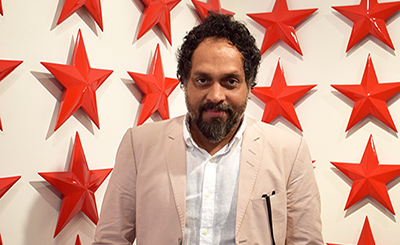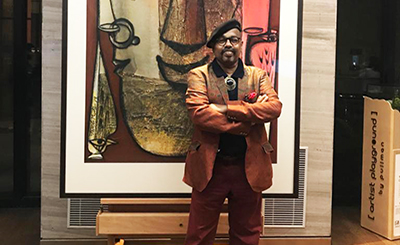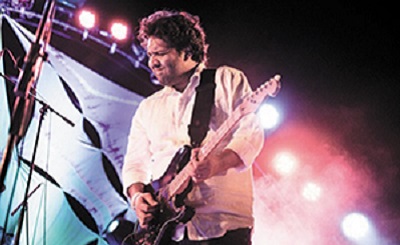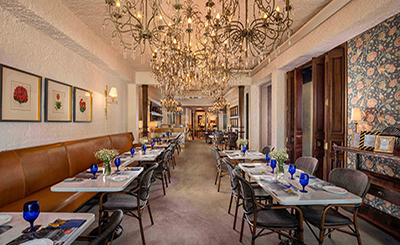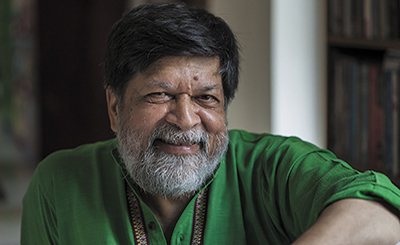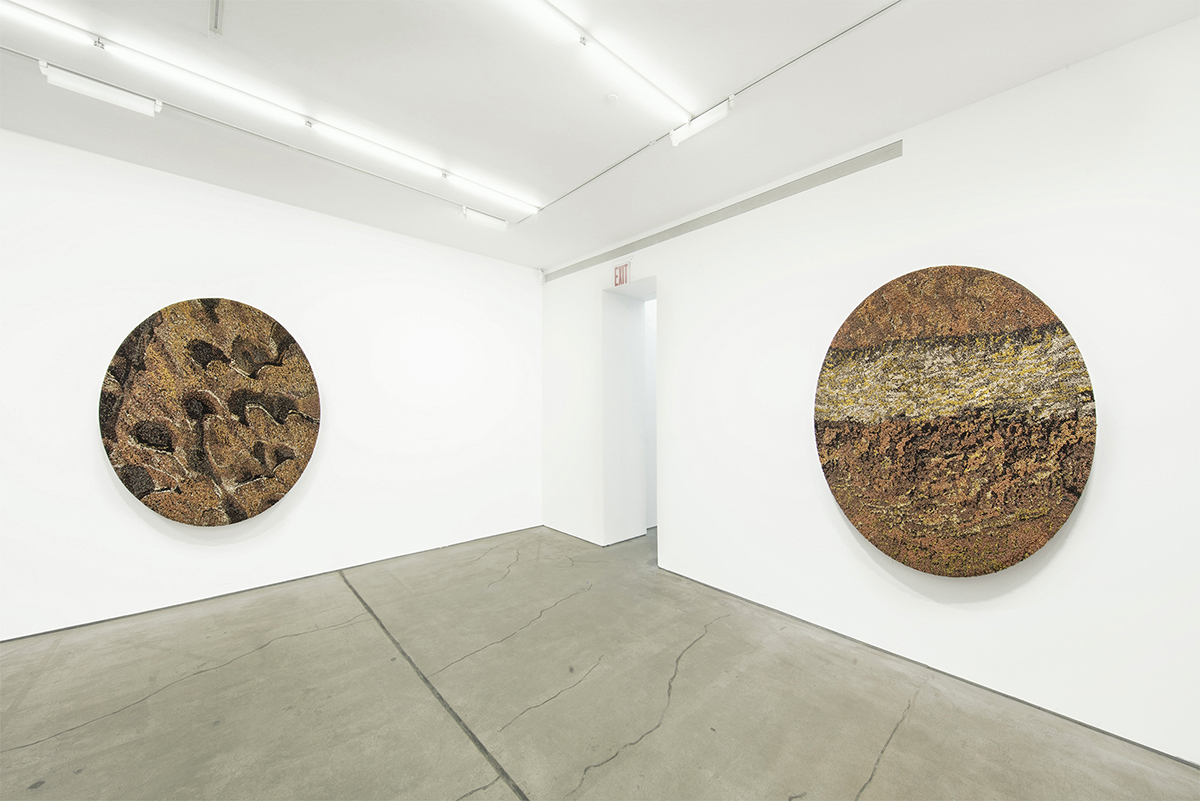
Beyond the Blue, Gallery Jackshainman, NY
The global shutdown and the continuing lockdown in India has given us an opportunity to rethink our ways, to adapt to more sustainable ways of living, and to understand the value of less is more. However, there remains an undercurrent of apprehension: After the ‘new normal’, will we gravitate towards the ‘old normal’ after all?
June 5 marked the World Environmental Day. It was pouring outside, the rainy weather atypical for the usually scorching heat of the month of June in Delhi. I sat in my study after almost three days of feeling unusual restlessness turned into guilt for the time wasted. Perhaps, I was swimming in a pool of high EQ rather than IQ, in emotions we often avoid encountering or acknowledging in our otherwise busy lives. A friend I spoke to commented how people (mostly men) might perceive my current state as PMS.
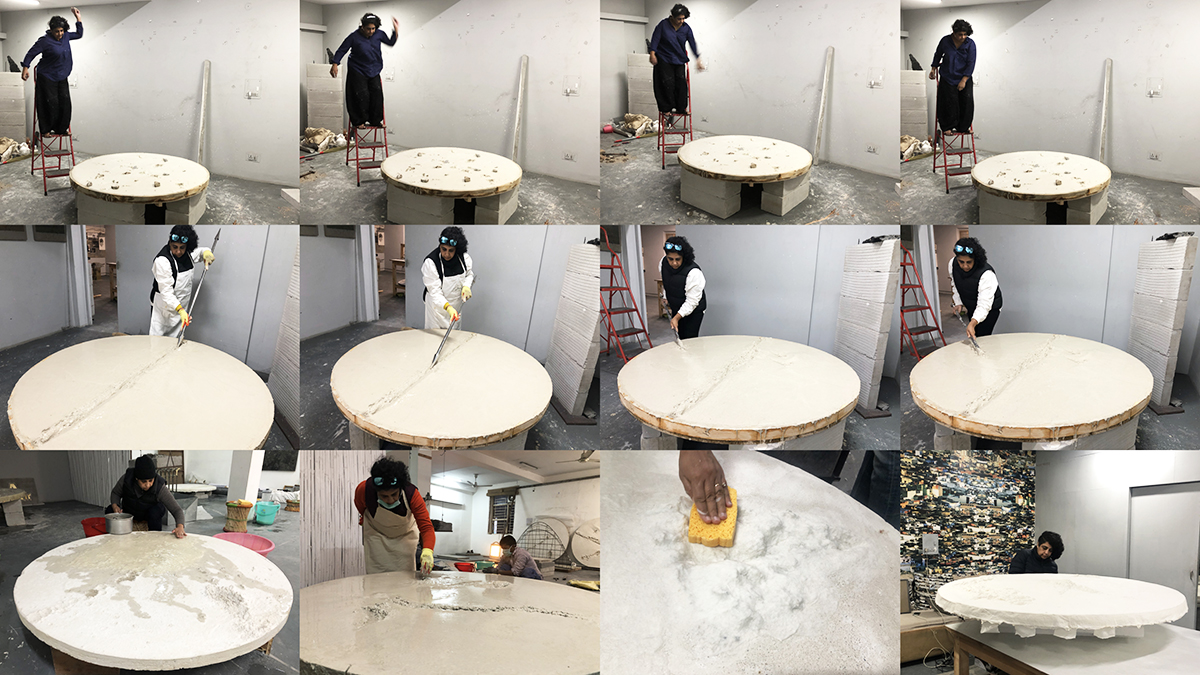
The process
However, in this case, my hormones weren’t to be blamed. It was the melancholy and angst over the abysmal events all across the world — the news about the rising number of people dying from COVID-19; the state of the poor and homeless starving, the dismal condition of poor migrants heading back to their villages, little kids walking, cycling hundreds of miles to reach their hometown; the two cyclones that devastated West Bengal and some parts of Maharashtra, leaving thousands of people homeless amidst the spread of the virus; the racial protests in America; the India-China border tensions; the series of mild earthquakes in northern India, wildfires in Uttarakhand or the widening of the ozone gaps over the South Pole. While each of these pieces of news left me disheartened, this didn’t seem enough and the added blow came with the news of the killing of a pregnant elephant that died after eating a pineapple stuffed with firecrackers.
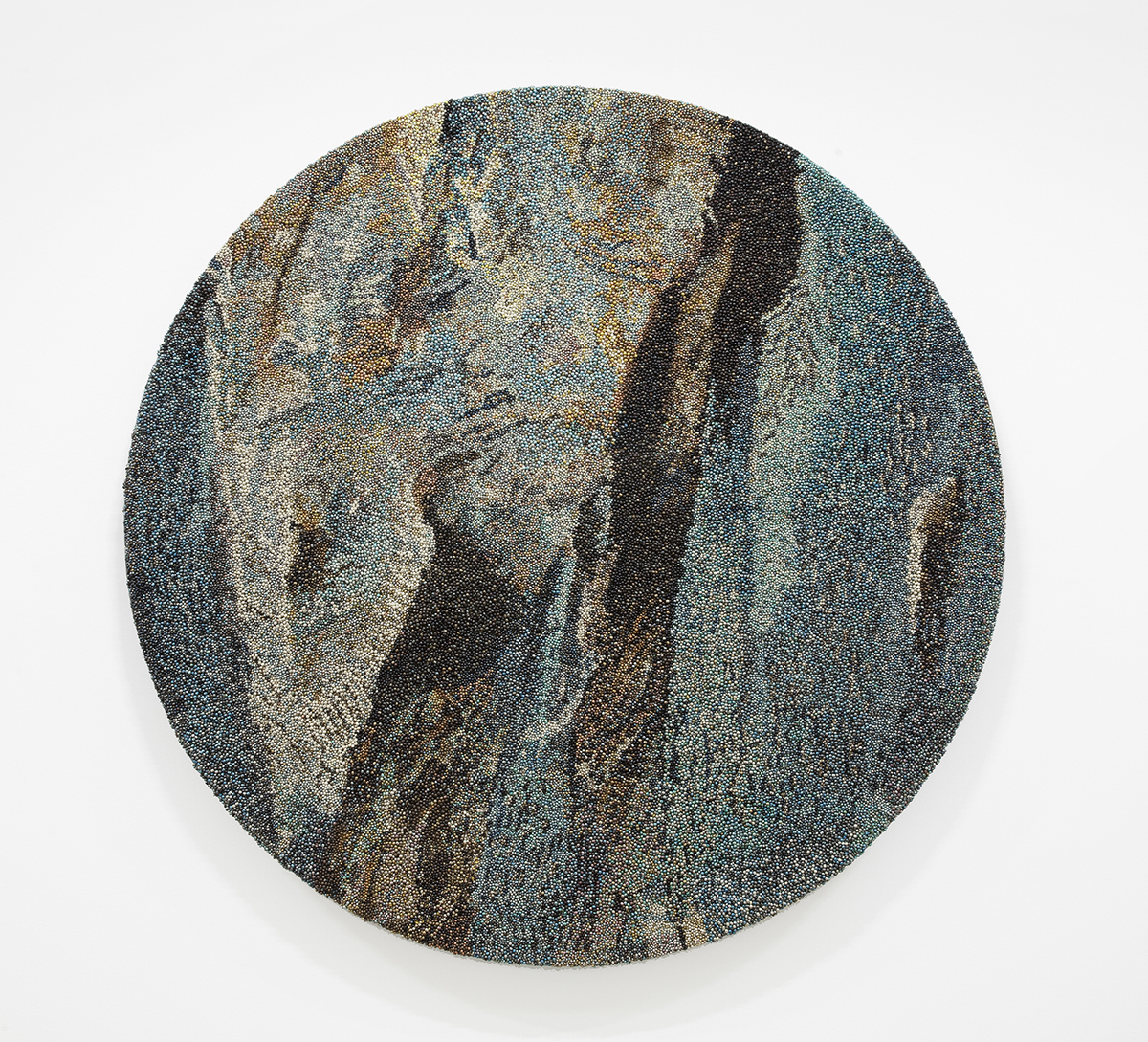
Windblown Sand (from the series Life on Mars)
While the world contemplates the coronavirus-disguised revenge of nature, what we really need to contemplate is the savagery of the human nature. This particular incident made me wonder whether we will return to our old ways of abusing resources and nature once we are able to tame the virus, Will we learn nothing from this unprecedented global crisis? At a time when everyone is constantly trying to seek and adjust to a “new normal”, will the latter gravitate towards the old normal after all?
The COVID-19 pandemic is a warning. The global shutdown and the continuing lockdown in India has given us an opportunity to rethink our ways, to adapt to more sustainable ways of living, to understand the value of less is more. However, what finally transpires will depend on people and the government’s will on how they want to shape this world that currently lies somewhere between the old and the new.
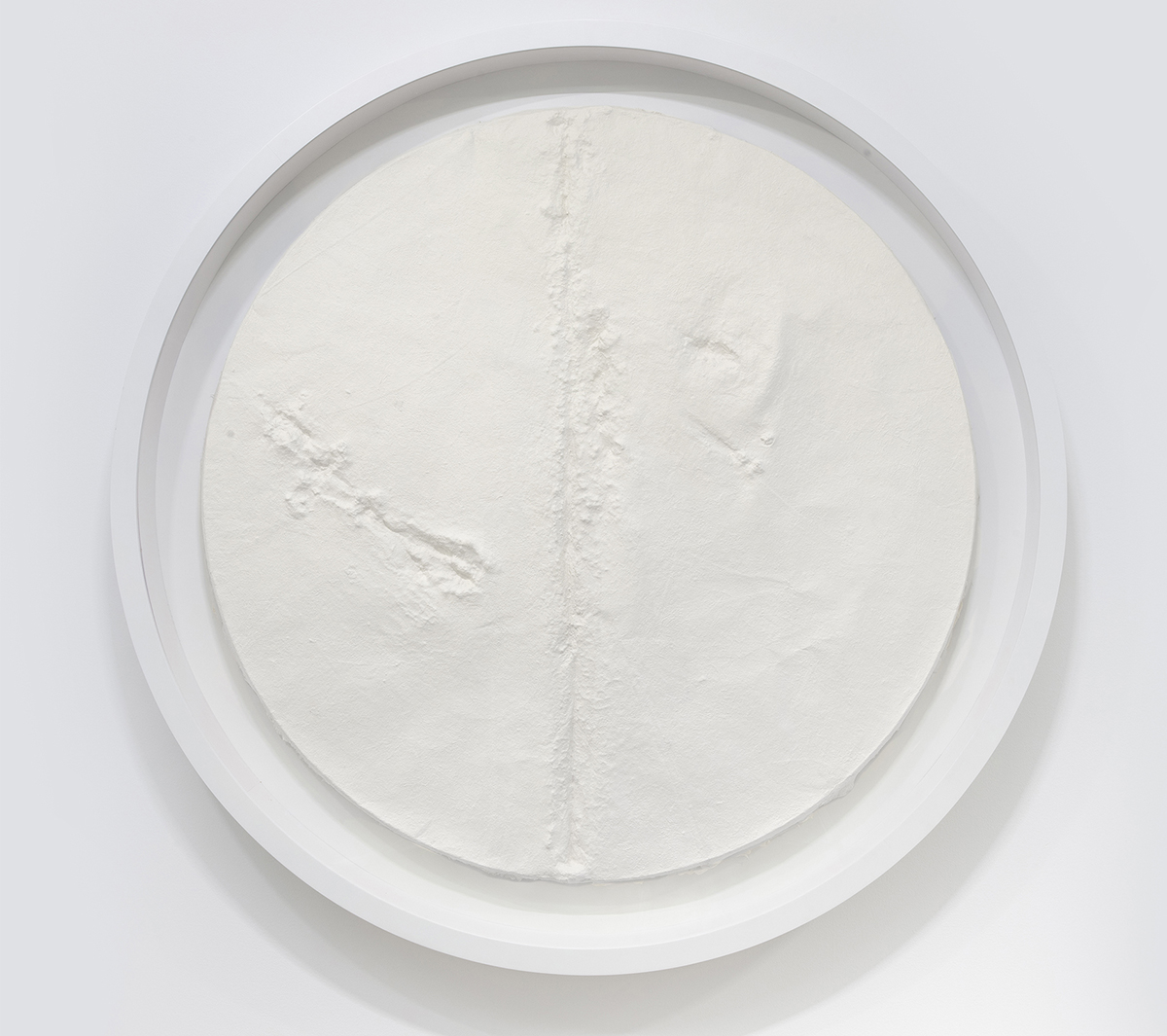
Wounded I
In my solo exhibition early this year, I, too, questioned and speculated about what will be the “new normal”, not in the immediate future, but the one that might await us finally if things do not change. The climate of unrest that plagued India from the very beginning of 2020 made me raise the fundamental questions: Where do we come from? Who we are? Where are we going?
I remember the coldest month of January when I was working in my studio with wet paper pulp. The process made my fingers and back sore as I was preparing for my then upcoming solo exhibition, Beyond the Blue, in New York which was opening on February 22 and would be on till March 28, 2020. To create the work series Wounded for the show, I used concrete to create holes and scars, marking the circular works with injuries to mimic the act of abusing the living organism of our planet. Once wounded and scarred, I would carefully cast the final works in paper, its fragility representative of the fragility of our planet and our existence. The scars, however, weren’t merely an aesthetic confined to my work in my studio; in fact, the city outside was burning with heat against the Citizen Amendment Bill passed by the present government. The protests were spreading like forest fires, people were dying, India was overcome with protests. I was divided between my commitment to my exhibition and to my community. The pain was soaring everyday seeing the tyranny of the government and the violence they effected on the harmless protesters. I was absorbed deep, deliberating over human behaviour, bigotry, violence and pain which seemed to be only leading to more inequality within our so-called “advanced modern society”. However, power and human greed seem to have characterised every epoch in history and ours isn’t so different. The scenario made me question our ignorant existence amidst the failing social, political and economic structures of society and the complications of human behaviour where the imbalance between the powerful and the voiceless is so emblematic of the “democracies” we occupy.
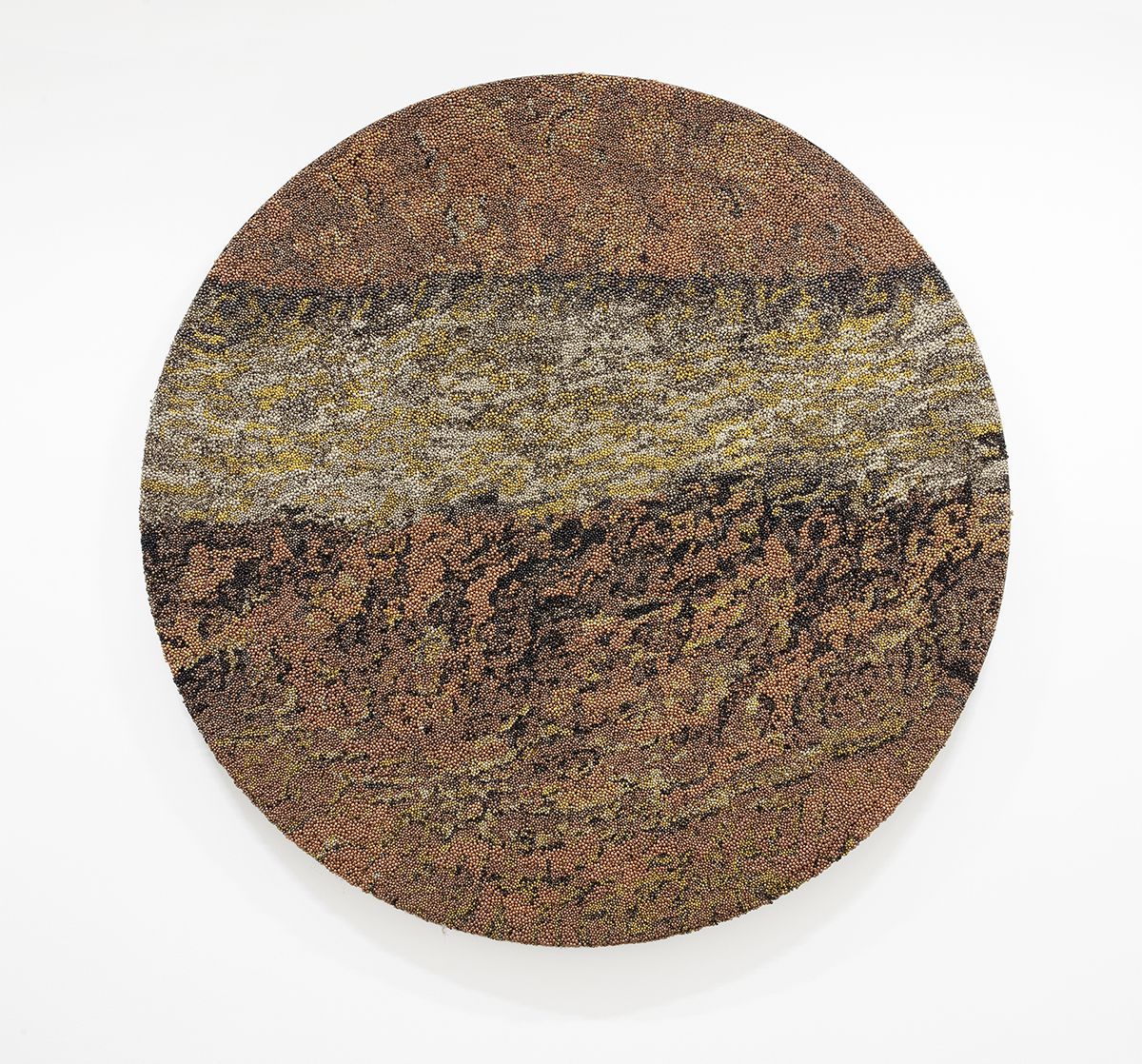
Ejecta (from the series Life on Mars)
My exhibition Beyond the Blue was also an attempt to silently address the upcoming problem of an absurd inequality that might stem from inter-planetary migration by colonising Mars. The aggressive exploitation of our planet’s natural resources hints at an imminent catastrophe, one of its likely manifestations being the COVID-19 pandemic itself. While we are aware of the possible impact of our actions, most world powers hope to be able to escape the consequences, racing to actualise the utopian idea of colonising the red planet. The idea of migrating to Mars has, in fact, fuelled a space race between the so-called superpowers of the world. To showcase the irony of our actions, I divided the exhibition into two sections: the first one displaying the Wounded series, with white circular works in paper pulp depicting the cruelty of human action towards damaging the blue planet and its cohabiters for personal aggrandizement. The research for the works was informed by the work of numerous eco-warriors. In the second section of the exhibition, my works were informed by the venerable yet rather absurd and expensive research work carried out by the different space agencies on Mars. NASA has been involved in pursuing extensive research on Mars, in collaboration with SpaceX, the latter having disclosed its plan to construct a colony on Mars. It made me wonder whether the country which discovered water on Mars first would then get to colonise the planet opening up a pandora of exploitation, abuse and inequality yet again.
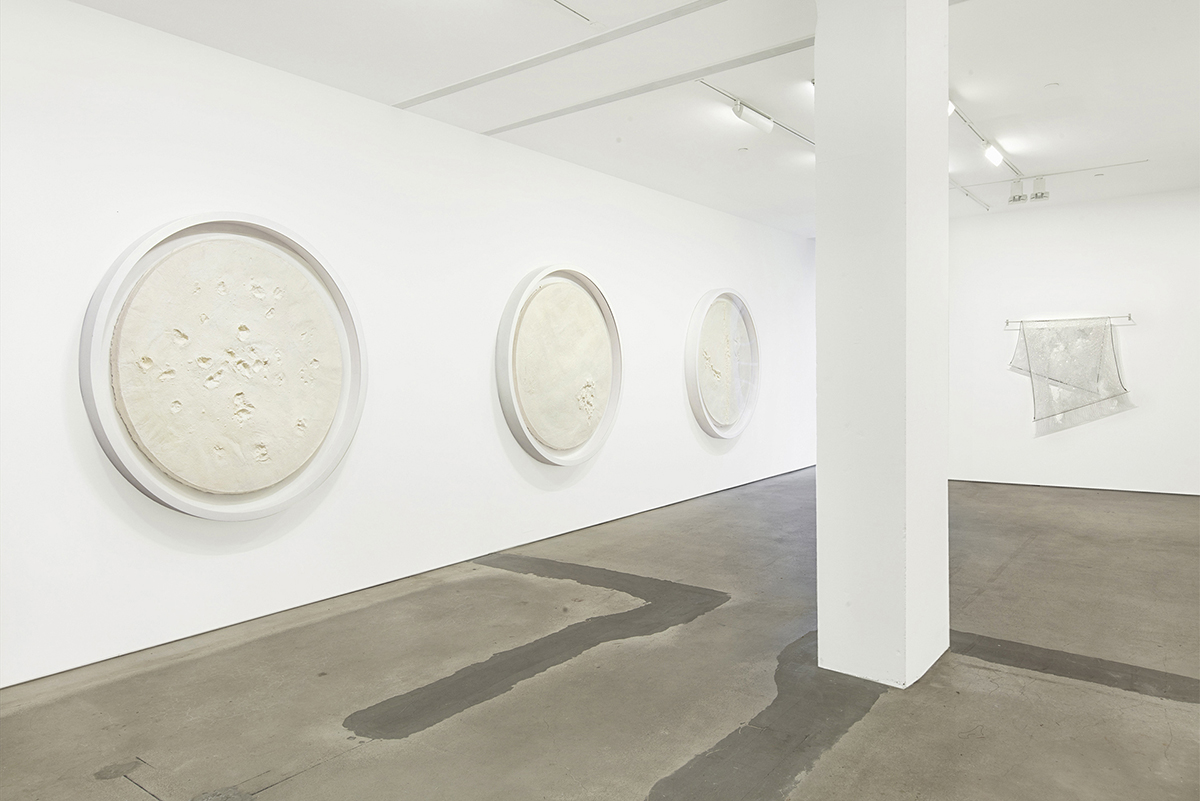
Beyond the Blue, Gallery Jackshainman, NY
To convey this research through my work, I literally took images from the NASA open resource bank of images taken by the Reconnaissance Orbiter on Mars which searched for any impression of water on the planet to indicate towards the possibility of future life. Taking those images, I transformed them on my canvas with basic drawing tools and then re-appropriated the images, which were once created by a camera in millions of pixels, with ghungroos instead. The exhibition aimed to present the plain, misguided and confused state of our mind with great visuals advertised to lure us into the new capitalist idea of migrating to Mars. It makes me wonder what all we could have achieved if the money used to finance the search of a future utopia of escape would have been spent instead on improving the ecosystem of our own planet. Could we have avoided this pandemic then?
This piece is a part of our special issue on Art in the time of Pandemic, curated by critic, author and one of our contributing editors, Ina Puri
More from Arts
Comments
*Comments will be moderated




